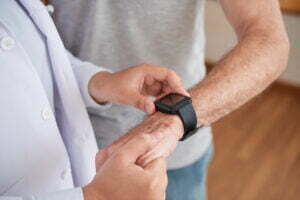Remote Patient Monitoring (RPM) has been evolving quickly and becoming an integral part of our healthcare delivery system. The adoption and implementation of RPM solutions are increasing and educating the patients must be strengthened in order to achieve better access to care, and improve health outcomes for patients, healthcare providers, and the healthcare system. Here are 5 simple ways to educate patients and providers about Remote Patient Monitoring (RPM).
Here are ways to educate patients and providers about Remote Patient Monitoring:
1. Look into patients’ differences and cater to them based on their own style of learning
Introducing RPM to patients can be a great challenge, especially when it comes to the implementation of guidelines and practices. But the first thing you need to focus on is the idea that every patient is different. Patients have different needs, problems, and styles of learning which sometimes pose a challenge when educating them. It is necessary to provide patient education in a different format depending on their capability, needs, and what the right protocol is for them. This means that patient education should be customized to match the patient’s capabilities and their personal care plan.
Asking patients what their preferred means of communication are, such as voice calls or video conferencing, can avoid potential difficulties in communicating. This is because some patients are more comfortable with voice calls when communicating, it is easy for them to give more feedback or insights about what they are learning. By asking their preferences you are also showing them that their individual differences are important and respected.
2. Be confident with your goals, the devices, and the technology
When implementing the RPM, you need to present and operate the technology with confidence so patients will trust your goals, the devices, and the whole process. Communicate to the patients the types of devices that can be used, the management and security of those devices, and how that data will be analyzed. For example, RPM healthcare providers typically install their software on preset devices such as pulse oximeters, weight scales, blood pressure cuffs, and blood glucose monitors. The patient should view using RPM as easy and have confidence in how the device will be managed, installed, and how to receive ongoing maintenance if needed. To educate the patients, you need to be persistent and be well equipped with the knowledge of how data is collected, transmitted and stored. These processes ensure clinicians are alerted to any abnormalities in their patients’ health along the way.
3. Maintain and improve engagement
Maintaining substantial engagement is required when educating the patients about RPM solutions. Engagement helps ensure patient preparedness. Tracking the incoming patient data will ensure the devices and program are working as intended. Incoming patient data can be used to enhance patient health outcomes, whether it’s through emergency medical interventions or adjustments to their care plan. When first introducing RPM, it is expected that you will put more time into supporting patients by answering daily queries, troubleshooting, or solving technical issues. You may find it helpful to schedule follow-ups with patients to address any issues or concerns. Maintaining and improving engagement with patients is made easier with automated reminders, quick notifications, which can make patient outreach easy and quick.
4. Encourage the team and the patients to fully understand the program
The team and the patients should fully understand the RPM program and be an important part of achieving its goals. By encouraging them and giving continuous support, you’re keeping them motivated to get involved and strive for successful healthcare outcomes. The team must be prepared to teach patients the skills, knowledge, and mindset needed for the program to run successfully. It’s also important for them to take the time to talk with patients about how RPM can help them achieve their goals. Healthcare providers must communicate modifications in medication and other self-care to the patient and provide answers to patient questions. If some problems, symptoms, or diseases progress to the point that hospital services are needed, healthcare providers will be able to set up care and transport that will ensure the safety of the patient.
5. Evaluate and always seek improvement
In planning or creating RPM solutions, make sure you set specific and reliable short and long-term goals that have measurable standards so you can evaluate the progress and seek more improvement. Track your progress and understand the flow of the program so you can better assess the results and outcomes. Evaluate the indicators of your success along the way and identify places for improvement once the project is up and running. You can evaluate healthcare outcomes like patient satisfaction as well as financial and operational metrics. Having this data will give you an opportunity in your practice to determine whether to expand the remote patient monitoring program to more patients or revise the programs to perform better.
Takeaway
Patient education is at the heart of Remote Patient Monitoring (RPM). It is an important part that will measure if the RPM solutions work to improve health and the care experience by supporting patients to take a greater role in their own healthcare experience. Successful implementation of an RPM program for your patients can improve patient health outcomes and offer a new revenue stream for practices. By using these five ways to educate patients and providers about RPM, the health system can achieve better health outcomes.
Want to learn more? Here’s the Complete Guide to Remote Patient Monitoring.









